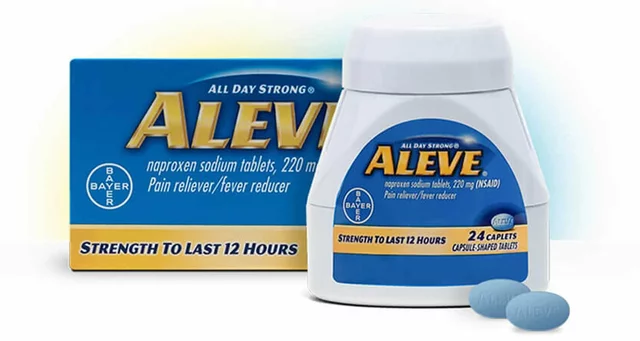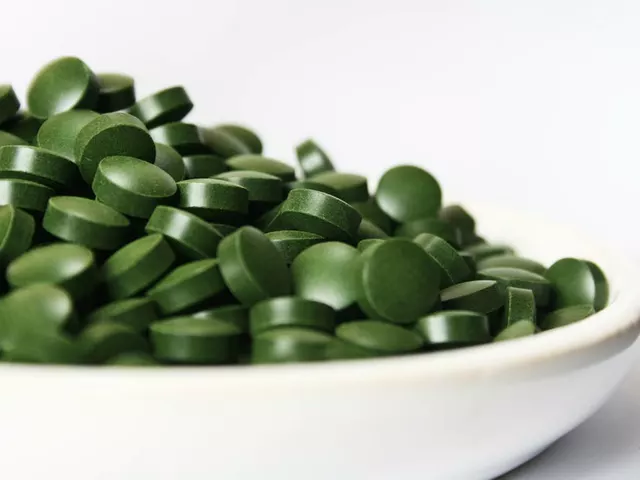What Exactly Is Plantar Fasciitis?
Plantar fasciitis isn’t just a sore heel-it’s a breakdown of the thick band of tissue running along the bottom of your foot, connecting your heel to your toes. This tissue, called the plantar fascia, acts like a shock absorber and supports your arch. When it’s overstressed, tiny tears develop, and over time, the tissue starts to degenerate. That’s why experts now call it plantar fasciopathy-not inflammation, but degeneration. About 1 in 10 people will deal with this at some point, especially between ages 40 and 60. It’s one of the most common reasons people visit a doctor for foot pain.
Why Does It Hurt So Much in the Morning?
If you’ve ever taken your first steps out of bed and felt a sharp stab in your heel, you’ve experienced the classic sign of plantar fasciopathy. That pain isn’t random. During sleep, the plantar fascia shortens and tightens. When you stand up, it suddenly stretches again, pulling on the damaged tissue where it attaches to your heel bone. For 76% of people, this pain is worst in the first five steps after resting. It often eases after walking around for a few minutes, but comes back by the end of the day, especially if you’ve been on your feet for hours.
Who’s Most at Risk?
This isn’t just a runner’s problem. While 37% of cases happen in active people who run more than 10 miles a week, the majority-63%-are in people who are less active but carry extra weight. A BMI over 27 increases your risk by more than four times. Jobs that require standing more than four hours a day, like teaching, nursing, or factory work, also raise your odds significantly. Other key risk factors include having flat feet, limited ankle flexibility (less than 10 degrees of dorsiflexion), or wearing shoes with no arch support. You don’t need a heel spur to have this condition-80% of people with plantar fasciopathy show no spurs on X-rays, and 15% of people with no pain at all have them.
How Do You Know It’s Not Something Else?
Not all heel pain is plantar fasciopathy. Other conditions can mimic it. Baxter’s neuritis causes a burning pain on the inside of the heel, often mistaken for plantar fasciitis. Tarsal tunnel syndrome leads to tingling or numbness under the foot, not sharp stabbing pain. The real giveaway? Location and timing. Plantar fasciopathy pain is focused about two to three centimeters forward from the inner heel bone. It flares with the first steps after rest and worsens with prolonged standing. Doctors use these signs, plus checking for pain when you pull your toes up, to make the diagnosis. Ultrasound is the most reliable test-it shows if the fascia is thicker than 4.0 mm (normal is 2.0-3.5 mm), which confirms the diagnosis in 85% of cases.

What Actually Works for Treatment?
Here’s the good news: 80-90% of people get better with conservative care within six to twelve months. The key is consistency, not quick fixes. The most effective first-line treatment is a specific stretch targeting the plantar fascia itself-not just the calf. Sit down, loop a towel around the ball of your foot, and gently pull your toes toward your shin until you feel a stretch along the bottom of your foot. Hold for 10 seconds, repeat 10 times, three times a day. This method reduces pain 37% more than regular calf stretches after just four weeks. Studies show 83% of people who stick with this see major improvement in eight weeks.
Other Proven Treatments and Their Real-World Results
Stretching alone helps, but combining it with other methods boosts success. Night splints, worn while sleeping to keep the foot stretched, improve symptoms in 72% of users within six weeks. But 44% quit because they’re uncomfortable. Custom orthotics reduce pain by 68% at 12 weeks, compared to 52% with off-the-shelf inserts. If you’re on your feet all day, investing in supportive shoes matters. Models like the Brooks Adrenaline GTS and Hoka Clifton have the highest patient satisfaction-82% and 79% respectively-because they offer good heel cushioning and arch support with a 10-15mm heel-to-toe drop.
What Doesn’t Work-or Makes Things Worse?
Corticosteroid injections are often offered early, but they’re risky. While they might give you a few weeks of relief, they carry an 18% chance of rupturing the plantar fascia after multiple shots. They also cause fat pad atrophy in 22% of cases, leaving your heel even more vulnerable. Many patients get these injections too soon, despite guidelines advising against them in the first three months. Another mistake? Stretching through severe pain. That only makes the damage worse. And returning to running or jumping too soon? That’s how 72% of people end up with recurring pain.
What About Shockwave Therapy and PRP Injections?
Extracorporeal shockwave therapy (ESWT) works for 70-80% of people who haven’t improved after three months of stretching. But it’s expensive-$2,500 to $3,500 out of pocket, and only 35% of insurance plans cover it. Platelet-rich plasma (PRP) injections show promise, with a 2022 study showing 65% pain reduction at six months. But they cost $800-$1,200 per injection and are rarely covered by insurance. These are second-line options, not first. The 2023 AAOS guidelines now recommend radial shockwave therapy after conservative care fails, but only if you’re ready to commit to the cost and time.

How Long Does It Take to Get Better?
Most people start feeling better in six to eight weeks with daily stretching. Full recovery usually takes 10 months. But here’s the catch: you need to stick with it. A University of Rochester study found that 92% adherence to stretching was needed for optimal results. That means doing it three times a day, every day-even when it hurts. Skipping days slows progress. And even after the pain goes away, continuing stretches once a day helps prevent relapse. About 25-30% of people get it back within a year, usually because they stopped stretching or gained weight again.
What You Can Do Right Now
- Start the towel stretch: seated, pull toes toward shin, hold 10 seconds, 10 reps, 3x/day.
- Roll your foot over a frozen water bottle or tennis ball for 5 minutes before getting out of bed.
- Swap unsupportive shoes for ones with good arch support and cushioning (Brooks, Hoka, ASICS).
- If your BMI is over 27, aim to lose even 5-10 pounds-each pound lost reduces heel pain by about 5%.
- Avoid walking barefoot on hard floors, especially first thing in the morning.
- Don’t rush back into running or high-impact workouts until pain is gone for at least two weeks.
When to See a Specialist
If you’ve been doing daily stretches for eight weeks with no improvement, it’s time to see a physical therapist or podiatrist. They can check your gait, fit you for custom orthotics, or guide you through more advanced techniques. If you’re experiencing burning, tingling, or numbness-not just sharp heel pain-you might have nerve involvement and need a different approach. Don’t wait until the pain becomes disabling. Early, consistent care makes all the difference.
Is plantar fasciitis the same as heel spurs?
No. Heel spurs are bony growths on the heel bone, often seen on X-rays. But most people with plantar fasciopathy don’t have them, and many people with heel spurs have no pain at all. The real issue is the damaged tissue where the fascia attaches to the heel-not the spur itself. Doctors now focus on the soft tissue, not the bone, when diagnosing and treating.
Can I still run with plantar fasciitis?
It’s not recommended. Running puts high impact stress on the plantar fascia, which can make the degeneration worse. If you’re determined to stay active, switch to low-impact exercises like swimming, cycling, or using an elliptical machine until the pain improves. Once you’re pain-free for two weeks and have been stretching consistently, you can slowly reintroduce running-start with short distances and soft surfaces.
Do I need custom orthotics or are over-the-counter ones enough?
Over-the-counter orthotics help about 52% of people. Custom ones work better-68% see pain reduction. But custom inserts aren’t always necessary. Many people find relief with good-quality, supportive insoles like Superfeet or Powerstep. Try them first. If pain persists after six weeks, then consider custom orthotics, especially if you have flat feet or a high arch.
How long should I wear a night splint?
Wear it for 4-5 hours every night, ideally from bedtime until you wake up. The goal is to keep your foot stretched while you sleep so the fascia doesn’t tighten. Most people see improvement in 6-8 weeks. But if you can’t sleep well with it, try wearing it for shorter periods or only on nights when your pain is worst. Consistency matters more than perfect use.
Can weight loss really help with heel pain?
Yes-significantly. Every 1-point drop in BMI (like going from 30 to 29) reduces heel pain by about 5.3% within six months. That’s because less body weight means less pressure on the plantar fascia. Even losing 10 pounds can make a noticeable difference. For people with a BMI over 27, weight loss is one of the most effective, long-term treatments available.
Why do some doctors still recommend corticosteroid injections?
Some doctors offer injections because they provide fast, temporary relief-usually 2-4 weeks. But they don’t fix the underlying problem. The risk of rupturing the fascia or damaging the fat pad under your heel is real. Guidelines now strongly advise against injections in the first three months. They’re only considered if conservative care fails and pain is severe. Many patients regret getting them because the relief fades and the side effects last.
Is plantar fasciitis permanent?
No. In 90% of cases, the pain resolves completely within 10 months with the right care. The condition isn’t permanent, but it can come back if you stop stretching, gain weight, or return to high-impact activities too soon. Maintenance is key-even after the pain is gone, doing a quick stretch once a day helps prevent recurrence.
Final Thoughts: It’s a Marathon, Not a Sprint
Plantar fasciopathy doesn’t vanish overnight. It’s not a quick fix. But it’s also not a life sentence. The most successful people are the ones who treat it like a daily habit-not a crisis to be solved with one injection or one pair of shoes. Stretching, supportive footwear, weight management, and patience are your best tools. Most people who stick with the basics get their lives back. You don’t need surgery, expensive gadgets, or miracle cures. Just consistency. Start today. Your heels will thank you.




Just started the towel stretch today-first day, and my heel already feels a little less like a nail being hammered in. 🙌 I was skeptical, but if 83% of people see results in 8 weeks, I’m in. Consistency over magic fixes, right?